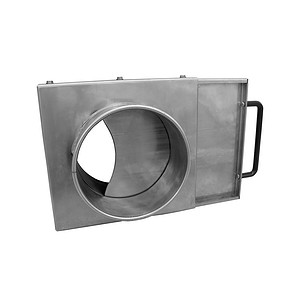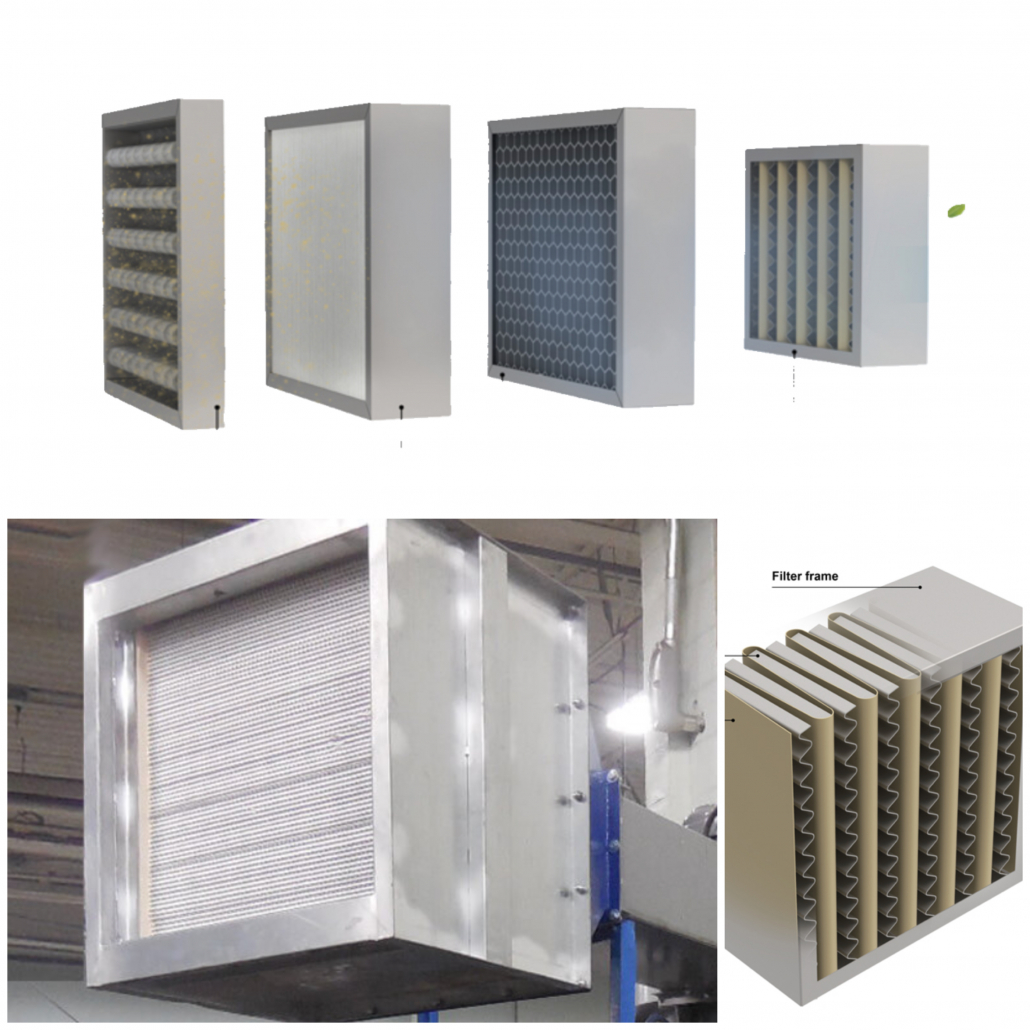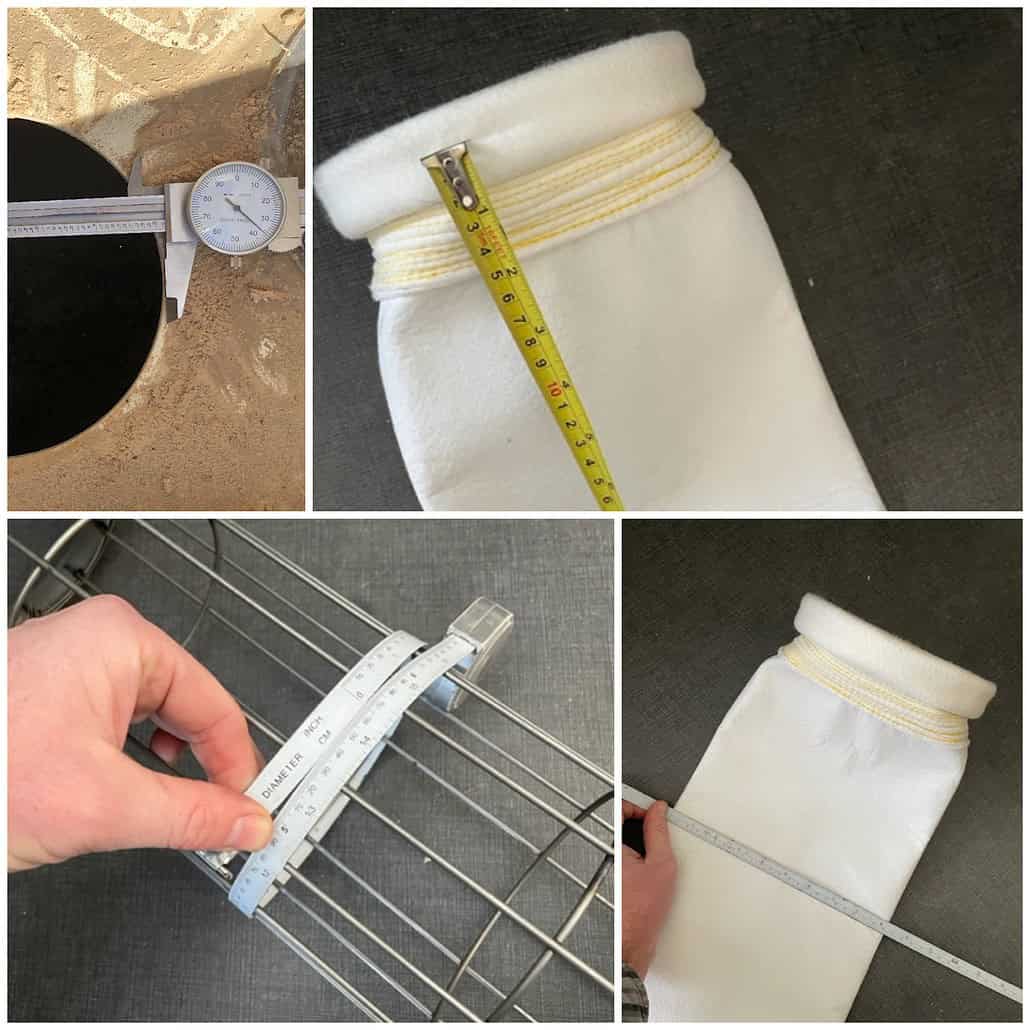You’ve invested in high-efficiency equipment and tools for your industry, but is your dust extraction system working at peak efficiency or is there waste in your system – wasted time, efficiency, or cost? In this article, we’ll explore the most common mistakes when designing dust extraction and collection systems and how to avoid them. A well-designed system not only ensures a clean and safe workspace but also maximizes the lifespan of your equipment.
Mistake #1: Incorrect Duct Diameters
Mistake: Using duct diameters that are either too small or excessively large can lead to problems. Undersize diameter ducts can quickly become clogged, or wear prematurely due to excess dust velocity. Oversize ducts reduce airflow velocity, which may lead to dust settling and clogging up your system.
Solution: Calculate the appropriate duct diameter based on your system’s needs to maintain optimal performance. You should know the minimum carrying velocity of your dust type, and pick a duct size to match the required air flow (CFM) for your dust. If you need assistance sizing your system, please watch this video Watch the video: Intro Guide to Sizing and Design Your Baghouse.

- Start by understanding the required velocity for your dust and the CFM – then pick a duct diameter to match.
Mistake #2: Using Straight Tees
Mistake: Installing equal (straight) tees can lead to clogs, especially when dealing with soft and fine dust particles. These sharp corners cause turbulent flow, resulting in static pressure loss, and areas of low flow where dust will pile up and clog your system.

The tee joint on the right is very inefficient; the 45-degree union fitting on the right is a much better design.
Solution: Opt for reducing tees, Y-pieces, or lateral tees to ensure smoother airflow and prevent clogging.
Mistake #3: Using Short Radius Elbows
Mistake: Using short radius elbows can disrupt airflow and greatly increase static pressure drop, similar to the tee joints mentioned above.

This sharp elbow will result in a large static pressure drop.
Solution: Use larger radius elbows (1.5D is standard) to maintain smooth airflow throughout your system and ensure you have adequate static pressure at your pickups.
Mistake #4: Accumulating Fittings Near Equipment
Mistake: Placing elements like dampers, bends, tees, and reducers too close to equipment can hinder proper airflow and reduce system efficiency. Remember, velocity is key in keeping dust airborne – disruptions in airflow slow down the dust, and your system must expend energy to speed it back up after a sharp elbow, etc. If that elbow is right next to your pickup, there is insufficient “runway” to gain sufficient velocity and laminar airflow – resulting in uneven or reduced suction at your pickups!
Solution: Maintain a minimum distance of 2.5 times the nominal duct diameter between airflow-disrupting elements and your pickups to ensure the system operates efficiently (even better is to remove or reduce these elements altogether!)
Mistake #5: Overuse of Flexible Ducting/Hoses
Mistake: Flex hose is very convenient and easy to install, and is often used to connect the last few feet of ductwork to your pickups. However, they are extremely “expensive” in terms of static pressure loss. Excessive use of flex hose can create unnecessary airflow resistance (up to 3X that of a standard duct), significantly reducing system efficiency.

Standard flex hose
Solution: Limit the use of flexible hoses to the absolute minimum required.
Mistake #6: Using Incorrect Duct Materials:
Mistake: Choosing the wrong material for your duct system (like plastic pipes instead of steel) can be dangerous and lead to explosion risks, very early wear and failure, and other issues.

Rolled lip, clamp-together steel duct is standard for dust collection systems.
Solution: Prioritize safety by using metal duct with smooth inner walls to minimize resistance and ensure unhindered airflow. When in doubt, contact an expert to size and select ductwork for your dust collection system.
Mistake #7: Excessively Long Duct Runs
Mistake: Designing excessively long duct runs results in large static pressure drops across the system, meaning that the suction your fan generates isn’t available where it’s needed at the pickups. It’s all being lost in resistance across the long duct segments.
Solution: Install shorter main ducts with lateral discharge branches to individual machines for improved airflow and better static pressure where you need it.
Mistake #8: Incorrect Use of Gates and Dampers:

Manual cut-off gates are useful, but should be used in alignment with your system design.
Mistake: Incorrectly using cut-offs (also referred to as blast gates or dampers) in your system can lead to system imbalances (too much/too little air flow and velocity where you needed) and dust accumulation and blockages, as well as incorrect static pressure at your pickups.
Solution: If you plan to use manual gates to control flow (to turn specific equipment on/off, for example) ensure that is taken into account in the system design. Modifying your dust collection system then periodically “balancing” it to correct issues, although commonly practiced, is very inefficient and will result in sub-optimal efficiency. Generally blast gates should be fully open or fully closed. If balancing is required, contact an expert to help you with your system.
Contact Us to Speak to One of Our Baghouse Experts.
For more baghouse related training and information, be sure to check out our Baghouse Online Training page.






